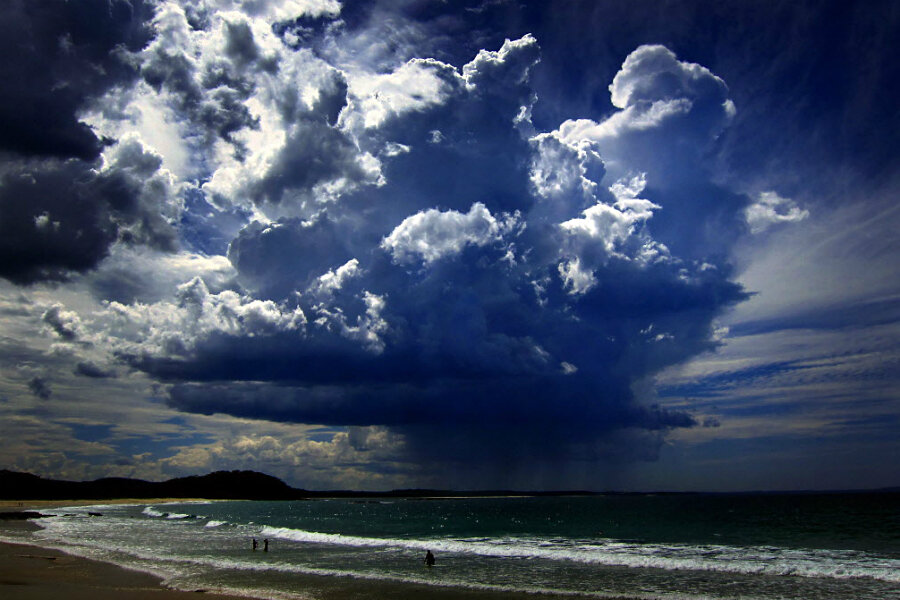How do clouds form? It's way more complex than we learned in school.
Loading...
The water cycle is one of the first science lessons children receive in elementary school.
The lesson may go something like this: When water heats up, it turns from a liquid to a vapor. That water vapor rises up into the atmosphere, but it's colder up there. In the lower temperatures, the vapor begins to condense back into a liquid. Those tiny water droplets form clouds, and when the droplets grow large enough, they fall back down onto the Earth as raindrops or another form of precipitation.
Evaporation. Condensation. Precipitation. It seems like a relatively straightforward process. You may have even learned a song to help remember the lesson. But scientists still puzzle over some of the details, particularly how water vapor in the air can actually turn into a cloud.
Water vapor doesn't condense into droplets on its own. It has to condense onto something (so that children's song might sound a little different). That's where tiny particles in the atmosphere called aerosols come in.
Aerosols can be tiny pieces of dust, volcanic emissions, smoke, or even human-made emissions. They serve as "seeds" for cloud droplets, called cloud condensation nuclei. But how do those different microscopic particles interact with the water vapor?
It depends on the solubility of a particular particle. "The conventional wisdom is that organic material dissolves throughout the cloud droplet," Christopher Ruehl, the lead author on a new study published Thursday in the journal Science, tells The Christian Science Monitor in an interview. But Dr. Ruehl's team found that organic-rich aerosols actually dissolved so that most of the material is around the surface of the droplet. This weakens the surface tension and that allows the droplets to be about 50 percent larger than previously suggested when they initially form, he says.
Inorganic aerosols, those from human pollution, actually contain more soluble particles and therefore are known to produce more droplets. However, those pollution-seeded droplets are much smaller.
The size of cloud droplets that eventually come together to form a cloud can have significant climatic effects in what's called the indirect aerosol effect. If the droplets are more numerous and smaller, more light will be scattered and that cloud will reflect more of the sunlight away from the Earth, causing a cooling effect.
But indirect aerosol effect "continues to be the largest climate uncertainty. It is purported to counteract or obscure greenhouse warming," Jim Hudson, a researcher in the division of atmospheric sciences at the Desert Research Institute who was not part of the new study tells the Monitor in an email. But "estimates vary considerably. There is even some evidence that it is at least sometimes a warming effect."
Many questions still abound about airflow within and around clouds, what particles are making up cloud condensation nuclei, and how clouds will factor in and respond to climate change. Learning more about clouds and how they fit into the climate cycle could help improve climate models in the face of global warming.
Aristotle described the water cycle in his text "Meteorologica" written around 350 B.C. as "a circular process that follows the course of the sun."
For according as the sun moves to this side or that, the moisture in this process rises or falls. We must think of it as a river flowing up and down in a circle and made up partly of air, partly of water. When the sun is near, the stream of vapour flows upwards; when it recedes, the stream of water flows down: and the order of sequence, at all events, in this process always remains the same.
The Greek philosopher was correct in many of his explanations about the natural world, but some have been refined as science has advanced. And for something that seems so mundane as clouds and the water cycle, there are still many mysteries.








